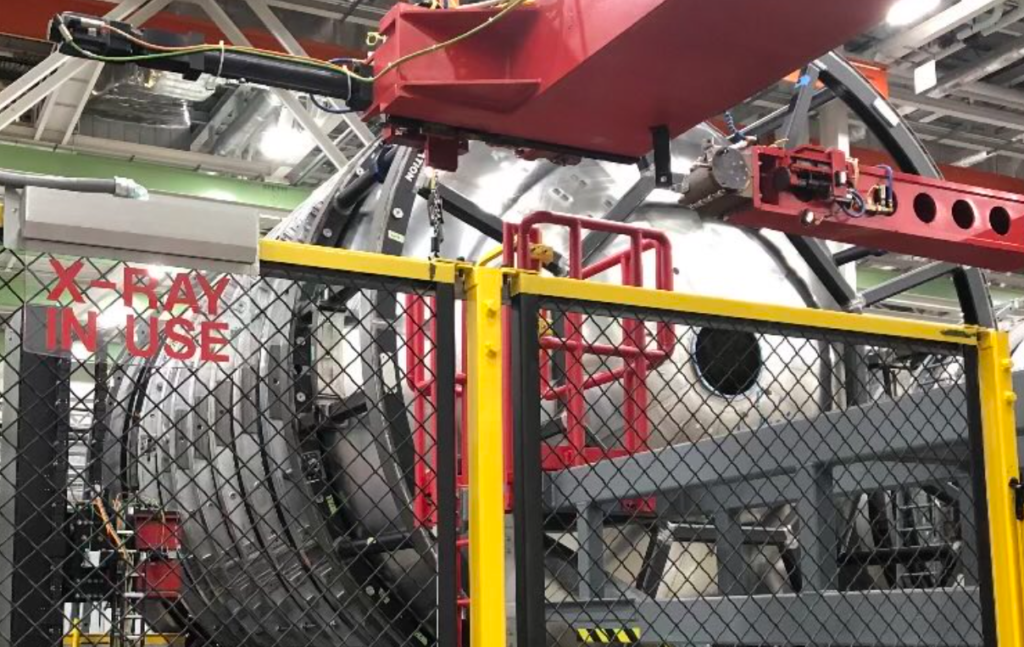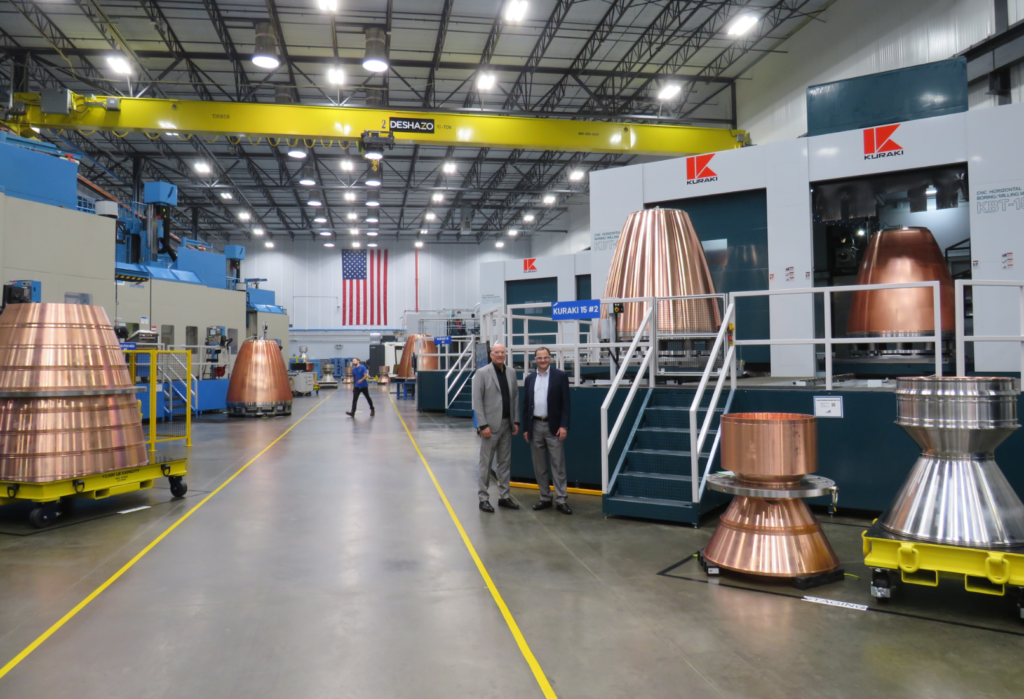Currently, the rocket that was most recently scheduled to lift off last month, is in United Launch Alliance’s factory undergoing necessary upgrades. After an upper stage test article exploded, the company found a weakness in the upper stage tank, and decided that Vulcan was not launching anywhere without fixing this problem.
Once discovered, Vulcan went from completing practically all of its pre-launch testing and preparing to liftoff in a month to being destacked and shipped away. Despite this significant hiccup, recent updates from ULA CEO Tory Bruno suggest that Vulcan will still lift off this year. A task that seems extremely unlikely given the circumstances and date.
This being said, physical progress is coming along and with most of the pre-launch testing already complete, ULA could have an opportunity to fast track the process and get Vulcan in the air before 2024. This is assuming that all the upgrades work as intended and no other issues are revealed within the next few months. Here I will go more in-depth into Vulcan’s upper stage reinforcement progress, what the company still needs to complete, the chances of a launch this year, and more.
Repair Update

Earlier this year photos and videos were released of a Centaur V upper stage exploding on the test stand. While the specific test article was separate from the flight article prepping to launch, it was the same design which brought up some concerns. Soon after ULA began an investigation to figure out what went wrong, however at the time they didn’t think it would affect the maiden flight of Vulcan, which was only months away. By then, Vulcan had completed tanking tests for both the first and upper stage, a wet dress rehearsal, and even a successful static fire of the two BE-4 engines.
Unfortunately, the investigation eventually found that the leak originated in the forward dome of the tank, which is made of very thin stainless steel, near a door at the top of the structure. A very detailed finite element model of that part of the tank revealed a “stress riser,” or intensification of loads, because of the complicated geometry around that part of the dome. More importantly, they realized that this weakness was not unique to this specific test article, but all the upper stage forward domes.
ULA then destacked the practically flight-ready Vulcan and shipped the upper stage away for necessary upgrades. This occurred a few months ago in June. In the relatively short time period between the and now, a lot has happened. Starting on July 27th we got an update from Tory Bruno who said, “The reinforced forward dome is built and getting ready to go on top of the rest of the tank.” We then heard more earlier this month when he said, “Inside of the new reinforced dome for Cert1 during build. You can see the circular doubler in the center and the seam doublers running out radially along the gore welds.” He also provided an image of this hardware with a view of the inside.
Just over a week ago on the 10th, when asked about a launch date he was quoted saying, “Yes. We continue to be on track for a launch in Q4 of this year. With a second launch in early 2024. The reinforced Cert1 Centaur V is making excellent progress in the factory, and it’s booster is ready to go at the Cape.” This is quite a big deal as not only did he confirm that Vulcan should still launch this year but that the second Vulcan launch will be early next year. These are very ambitious dates from Tory, and depend on a few big decisions that have yet to be made. For example, ULA is still not sure whether or not they will complete another wet dress rehearsal once the reinforced upper stage returns and is stacked on the booster. It’s likely that this decision will have quite the impact on schedule and whether or not a launch this year is possible.
If the information provided wasn’t enough, most recently on the 15th, Tory Bruno tweeted mentioning, “Just left the Rocket Factory. Finishing up welding the reinforced Centaur V forward dome onto the rest of the completed CV tank. Looking good for a launch this year.” Based on all this info and the confidence of Bruno, a Vulcan launch could be possible this year assuming everything goes perfectly between now and December. In other words, a single delay or slightly off test result would practically guarantee it gets pushed to next year and the second launch would only follow suit. With around 4 and half months left until 2024, we can expect a lot of updates from ULA as they prepare to launch again for the first time.
Two Vulcan Launches

With so much focus on Vulcan’s maiden flight, we hadn’t heard much regarding Vulcan’s second flight which is set to launch Dream Chaser. Fourntately, Tory Bruno is always eager to share information and tweeted “Dan Caughran, who runs the Rocket Factory in Decatur, decided to pop next door to Huntsville and check on the BE4 production ramp up at @blueorigin ‘s brand new, very modern, Rocket Engine Factory. Lots of WIP! And,… do I spy a #VulcanRocket CERT2 engine in final assembly?” This included a few images of the factor and engines in production.
Earlier this year, Blue Origin began ramping up engine production with demand expected to soar thanks to Vulcan and New Glenn. Besides the engine explosion during a recent test, they have been creating more hardware and producing good results. With ULA hoping to launch Vulcan a second time in early 2024, these engines need to finish and ship to ULA relatively soon for integration. A process we saw not long ago for the first time on the Cert1 Vulcan.
Focusing back on the first mission, we will likely see some tanking tests again but this time with the upgraded hardware. Back in March, the ULA team accomplished tanking demonstrations at Cape Canaveral Space Force Station, Florida. The pathfinder tests filled the Vulcan first stage and Centaur V upper stage with cryogenic propellant on separate days to validate performance of the stages, Vulcan Launch Platform (VLP), Space Launch Complex-41 facilities, and ground support systems.
The tests, which also verified countdown steps, procedures and timelines, were successfully performed March 10 on the Vulcan booster stage and March 16 on Centaur V. For both tests, the “Preps and Tanking Team” shift of launch console operators initiated the countdown to power up the rocket, perform testing and complete final configurations for cryogenic propellant loading. During the planned countdown hold, the launch pad was verified clear of all personnel and the authorization was given to proceed into tanking of the rocket. The transfer lines at the pad and the flight hardware underwent chill down procedures to thermally condition equipment against the harsh temperature shock of the propellants. Once that was achieved, the cryogenics began flowing into the rocket. The Vulcan booster uses Liquefied Natural Gas (LNG) and liquid oxygen; Centaur V is powered by liquid hydrogen and liquid oxygen.
A shift change in the control room saw the “Detanking and Securing Team” take over to drain the propellants back into the pad storage tanks, safe the rocket and power it down. Engineers then reviewed the tanking test data collected and information gained in test objectives aimed at characterizing the performance of hardware and confirming analytical predictions.
This is a process we could end up seeing again depending on what ULA decides. In terms of design, Vulcan is meant to combine the best of today’s Atlas V and Delta IV Heavy rockets with the latest technology advancements to produce a single launch system that provides higher performance and greater affordability while continuing to deliver ULA’s unmatched reliability and precision. They highlight that the single-core Vulcan can deliver payloads from low Earth orbit to Pluto and beyond while making access to space more cost-effective. Vulcan also meets the challenging requirements now demanded by an expanding spectrum of missions that are essential to the nation’s defense.
Most importantly, the new rocket can be built in less than half the time as its predecessors and launched at a much higher tempo. More than 70 Vulcan launches are currently on the manifest, including 38 launches to deploy a majority of Amazon’s Project Kuiper to provide fast, affordable broadband to unserved and underserved communities around the world; approximately 20 to 30 missions as the U.S. Space Force’s No. 1 offeror in the National Security Space Launch (NSSL) Phase 2 procurement; and the orbital delivery of Sierra Nevada Corp.’s Dream Chaser reusable spaceplane on cargo resupply missions to the International Space Station.
This inaugural mission, will deliver two Kuiper prototype broadband satellites into low Earth orbit, send the Astrobotic Peregrine commercial lunar lander to reach the Moon, and carry a Celestis Memorial Spaceflight Payload into deep space.
Once the stage is fixed and ready, it will be loaded onto the RocketShip. RocketShip is a highly maneuverable, unique custom-built rocket transport ship with the versatility to navigate the shallow and deep waters along the route. The 312-foot (95-meter) -long roll-on, roll-off vessel has complete living quarters and dining area for its crew of 16, a below-deck machine shop, and sophisticated computers and navigational aids on the bridge. All of which helping support Vulcan’s first mission, and many more to come.
Conclusion
ULA has had some trouble getting the first Vulcan off the ground, but is continuing to push forward. By now the upgrades are done and teams at ULA are finishing installation before shipment of the stage back to the launch site. We will have to wait and see how it progresses and the impact it has on the space industry.
